Contents
Foreword
1Scope
2References
3Abbreviations and Definitions3缩写和定义
3.1Abbreviations
3.2Definitions
4Overall Architecture and Functional Split4整体架构
4.1Overall Architecture4.1整体架构
4.2Functional Split4.2功能分裂
4.3Network Interfaces4.3网络接口
4.3.1NG Interface
4.3.1.1NG User Plane4.3.1.1 NG用户平面
4.3.1.2NG Control Plane4.3.1.2 NG控制平面
4.3.2Xn Interface
4.3.2.1Xn User Plane4.3.2.1 Xn用户平面
4.3.2.2Xn Control Plane4.3.2.2 Xn控制平面
4.4Radio Protocol Architecture4.4无线电协议架构
4.4.1User Plane
4.4.2Control Plane
4.5Multi-Radio Dual Connectivity4.5多无线电双连接
5Physical Layer
5.1Waveform, numerology and frame structure5.1波
5.2Downlink
5.2.1Downlink transmission scheme5.2.1下行传输方案
5.2.2Physical-layer processing for physical downl
5.2.3Physical downlink control channels5.2.3物理下
5.2.4Synchronization signal and PBCH block5.2.4
5.2.5Physical layer procedures5.2.5物理层程序
5.2.5.1Link adaptation5.2.5.1链路适配
5.2.5.2Power Control5.2.5.2功率控制
5.2.5.3Cell search
5.2.5.4HARQ
5.2.5.5Reception of SIB15.2.5.5接收SIB1
5.3Uplink
5.3.1Uplink transmission scheme5.3.1上行传输方案
5.3.2Physical-layer processing for physical uplin
5.3.3Physical uplink control channel5.3.3物理上行控制
5.3.4Random access
5.3.5Physical layer procedures5.3.5物理层程序
5.3.5.1Link adaptation5.3.5.1链路适配
5.3.5.2Uplink Power control5.3.5.2上行链路功率控制
5.3.5.3Uplink timing control5.3.5.3上行链路定时控制
5.3.5.4HARQ
5.4Carrier aggregation5.4载波聚合
5.4.1Carrier aggregation5.4.1载波聚合
5.4.2Supplementary Uplink5.4.2补充上行链路
5.5Transport Channels5.5运输渠道
6Layer 2
6.1Overview
6.2MAC Sublayer
6.2.1Services and Functions6.2.1服务和功能
6.2.2Logical Channels6.2.2逻辑信道
6.2.3Mapping to Transport Channels6.2.3映射到传输信道
6.2.4HARQ
6.3RLC Sublayer
6.3.1Transmission Modes6.3.1传输模式
6.3.2Services and Functions6.3.2服务和功能
6.3.3ARQ
6.4PDCP Sublayer
6.4.1Services and Functions6.4.1服务和功能
6.5SDAP Sublayer
6.6L2 Data Flow
6.7Carrier Aggregation6.7运营商聚合
6.8Dual Connectivity6.8双连接
6.9Supplementary Uplink6.9补充上行链路
6.10Bandwidth Adaptation6.10带宽适应
7RRC
7.1Services and Functions7.1服务和职能
7.2Protocol States
7.3System Information Handling7.3系统信息处理
7.3.1Overview
7.3.2Scheduling
7.3.3SI Modification7.3.3 SI修改
7.4Access Control
7.5UE Capability Retrieval framework7.5 UE能力检索框
7.6Transport of NAS Messages7.6 NAS消息的传输
7.7Carrier Aggregation7.7载波聚合
7.8Bandwidth Adaptation7.8带宽适应
7.9UE Assistance Information7.9 UE辅助信息
8NG Identities
8.1UE Identities
8.2Network Identities8.2网络身份
9Mobility and State Transitions9流动和国家转型
9.1Overview
9.2Intra-NR
9.2.1Mobility in RRC_IDLE9.2.1 RRC_IDLE中的移动性
9.2.1.1Cell Selection9.2.1.1小区选择
9.2.1.2Cell Reselection9.2.1.2小区重选
9.2.1.3State Transitions9.2.1.3国家过渡
9.2.2Mobility in RRC_INACTIVE9.2.2 RRC_INACTIVE
9.2.2.1Overview
9.2.2.2Cell Reselection9.2.2.2小区重选
9.2.2.3RAN-Based Notification Area9.2.2.3基于RAN的
9.2.2.4State Transitions9.2.2.4国家过渡
9.2.2.4.1UE triggered transition from RRC_INACTIV
9.2.2.4.2Network triggered transition from RRC_IN
9.2.2.5RNA update
9.2.3Mobility in RRC_CONNECTED9.2.3 RRC_CONNECT
9.2.3.1Overview
9.2.3.2Handover
9.2.3.2.1C-Plane Handling9.2.3.2.1 C平面处理
9.2.3.2.2U-Plane Handling9.2.3.2.2 U平面处理
9.2.3.2.3Data Forwarding9.2.3.2.3数据转发
9.2.3.3Re-establishment procedure9.2.3.3重建程序
9.2.4Measurements
9.2.5Paging
9.2.6Random Access Procedure9.2.6随机接入程序
9.2.7Radio Link Failure9.2.7无线链路故障
9.2.8Beam failure detection and recovery9.2.8光束
9.3Inter RAT
9.3.1Intra 5GC
9.3.1.1Cell Reselection9.3.1.1小区重选
9.3.1.2Handover
9.3.1.3Measurements9.3.1.3测量
9.3.2From 5GC to EPC9.3.2从5GC到EPC
9.3.2.1Cell Reselection9.3.2.1小区重选
9.3.2.2Handover and redirection9.3.2.2切换和重定向
9.3.2.3Measurements9.3.2.3测量
9.3.2.4Data Forwarding for the Control Plane9.3
9.3.2.5Data Forwarding for the User Plane9.3.2.
9.3.3From EPC to 5GC9.3.3从EPC到5GC
9.3.3.1Data Forwarding for the Control Plane9.3
9.3.3.2Data Forwarding for the User Plane9.3.3.
9.4Roaming and Access Restrictions9.4漫游和访问限制
10Scheduling
10.1Basic Scheduler Operation10.1基本调度程序操作
10.2Downlink Scheduling10.2下行调度
10.3Uplink Scheduling10.3上行调度
10.4Measurements to Support Scheduler Operation
10.5Rate Control
10.5.1Downlink
10.5.2Uplink
10.6Activation/Deactivation Mechanism10.6激活/去激活
10.7E-UTRA-NR Cell Resource Coordination10.7 E-
11UE Power Saving
12QoS
12.1Overview
12.2Explicit Congestion Notification12.2显式拥塞通知
13Security
13.1Overview and Principles13.1概述和原则
13.2Security Termination Points13.2安全终止点
13.3State Transitions and Mobility13.3国家转型和流动
14UE Capabilities
15Self-Configuration and Self-Optimisation15自我配
15.1Definitions
15.2Void
15.3Self-configuration15.3自我配置
15.3.1Dynamic configuration of the NG-C interface
15.3.1.1Prerequisites15.3.1.1先决条件
15.3.1.2SCTP initialization15.3.1.2 SCTP初始化
15.3.1.3Application layer initialization15.3.1.
15.3.2Dynamic Configuration of the Xn interface
15.3.2.1Prerequisites15.3.2.1先决条件
15.3.2.2SCTP initialization15.3.2.2 SCTP初始化
15.3.2.3Application layer initialization15.3.2.
15.3.3Automatic Neighbour Cell Relation Function
15.3.3.1General
15.3.3.2Intra-system Automatic Neighbour Cell Rel
15.3.3.3Void
15.3.3.4Void
15.3.3.5Inter-system Automatic Neighbour Cell Rel
15.3.4Xn-C TNL address discovery15.3.4 Xn-C TNL
15.4Support for Energy Saving15.4支持节能
15.4.1General
15.4.2Solution description15.4.2解决方案说明
15.4.3O&M requirements15.4.3Ø
16Verticals Support16垂直支撑
16.1URLLC
16.1.1Overview
16.1.2LCP Restrictions16.1.2 LCP限制
16.1.3Packet Duplication16.1.3包复制
16.2IMS Voice
16.2.0Support for IMS voice16.2.0支持IMS语音
16.2.1Support for MMTEL IMS voice and video enhan
16.2.1.1RAN-assisted codec adaptation16.2.1.1 R
16.2.1.2MMTEL voice quality/coverage enhancements
16.3Network Slicing16.3网络切片
16.3.1General Principles and Requirements16.3.1
16.3.2AMF and NW Slice Selection16.3.2 AMF和NW切片
16.3.2.1CN-RAN interaction and internal RAN aspec
16.3.2.2Radio Interface Aspects16.3.2.2无线电接口方面
16.3.3Resource Isolation and Management16.3.3资源
16.3.4Signalling Aspects16.3.4信令方面
16.3.4.1General
16.3.4.2AMF and NW Slice Selection16.3.4.2 AMF和
16.3.4.3UE Context Handling16.3.4.3 UE上下文处理
16.3.4.4PDU Session Setup Handling16.3.4.4 PDU会
16.3.4.5Mobility
16.4Public Warning System16.4公共预警系统
16.5Emergency Services16.5紧急服务
16.5.1Overview
16.5.2IMS Emergency call16.5.2 IMS紧急呼叫
16.5.3eCall over IMS16.5.3基于IMS的eCall
16.5.4Fallback
Annex A (informative):QoS Handling in RAN 附件A(
A.1PDU Session EstablishmentA.1 PDU会话建立
A.2New QoS Flow with RQoSA.2使用RQoS的新QoS流程
A.3New QoS Flow with Explicit RRC SignallingA.3
A.4New QoS Flow with Explicit NAS SignallingA.4
A.5Release of QoS Flow with Explicit Signalling
A.6UE Initiated UL QoS FlowA.6 UE发起的UL QoS流
Annex B (informative):Deployment Scenarios 附件B
B.1Supplementary UplinkB.1补充上行链路
B.2Multiple SSBs in a carrierB.2载波中的多个SSB
Annex C (informative):I-RNTI Reference Profiles
Annex D (informative):SPID ranges and mapping of
Annex E (informative):Change history 附件E(资料性附录
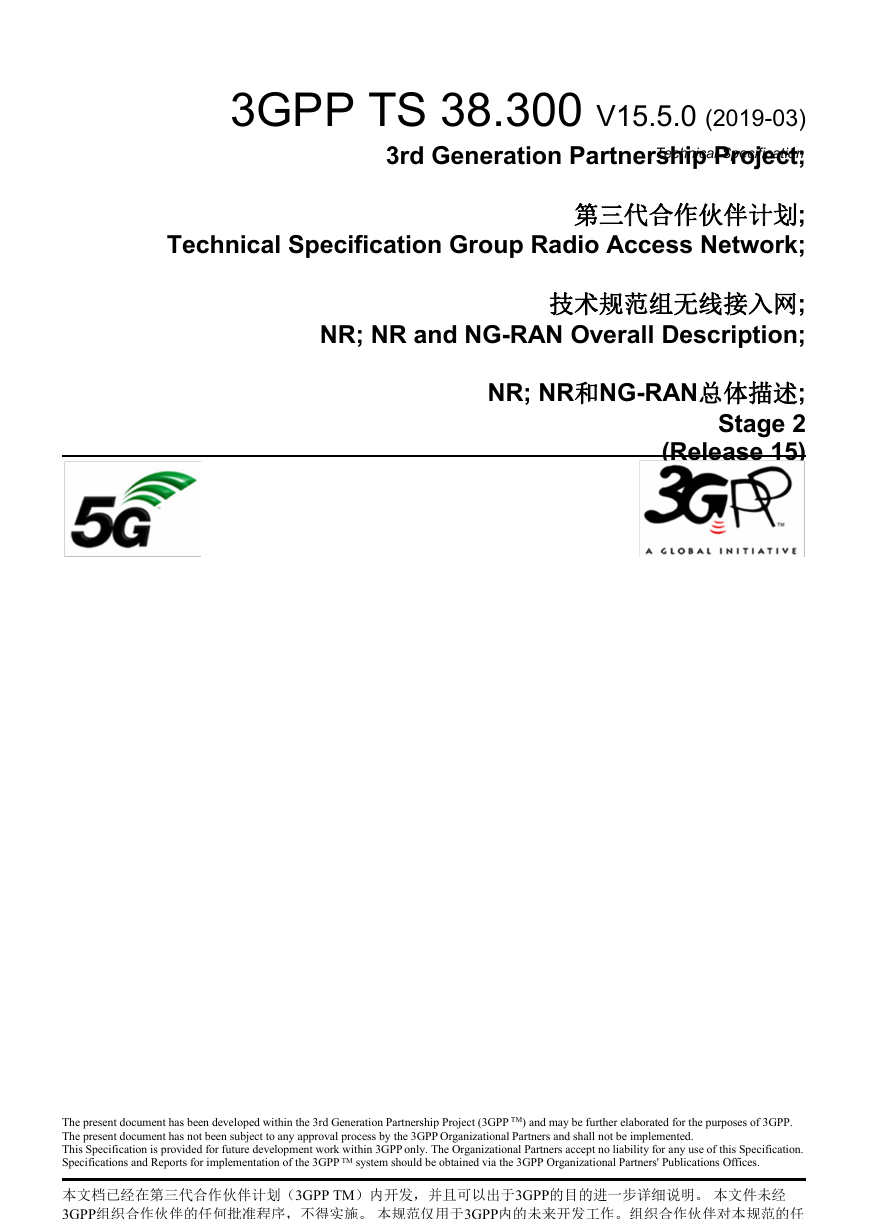

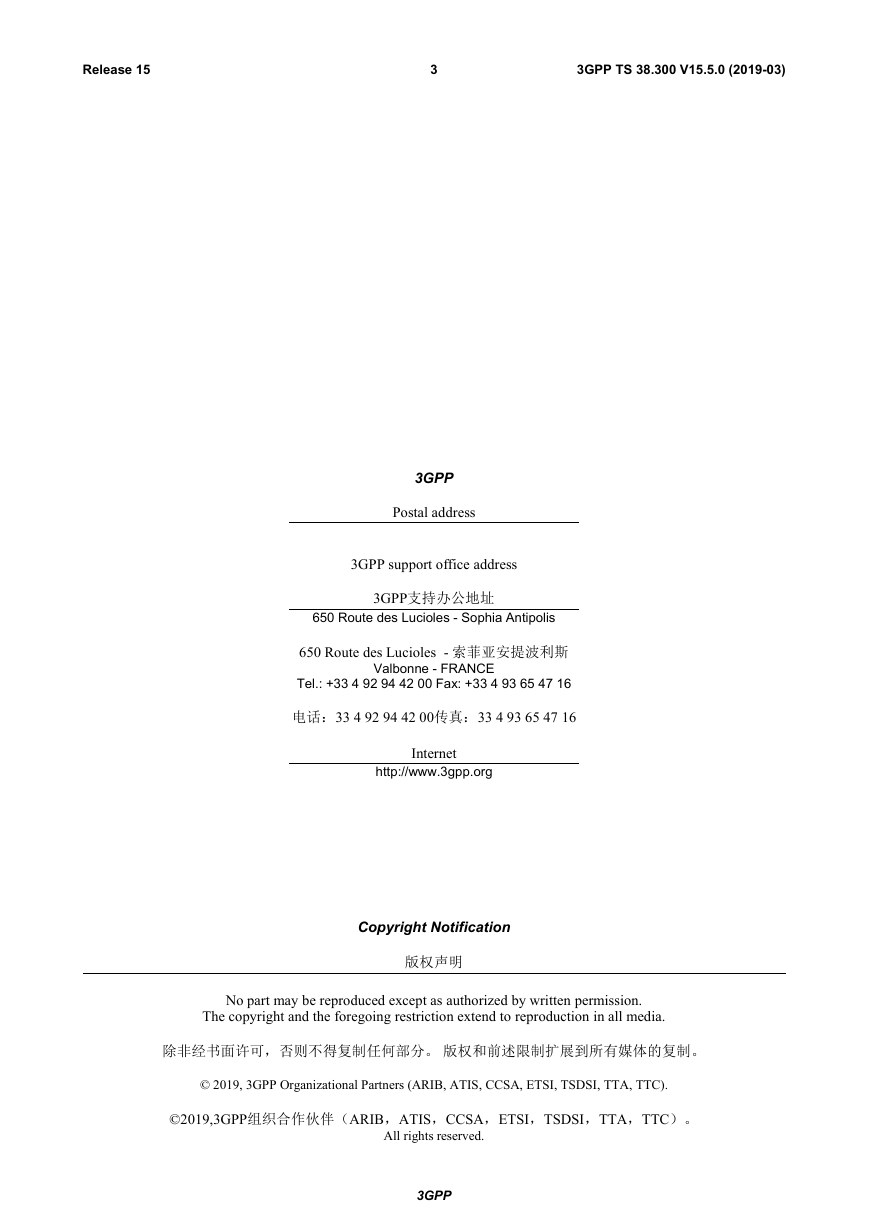
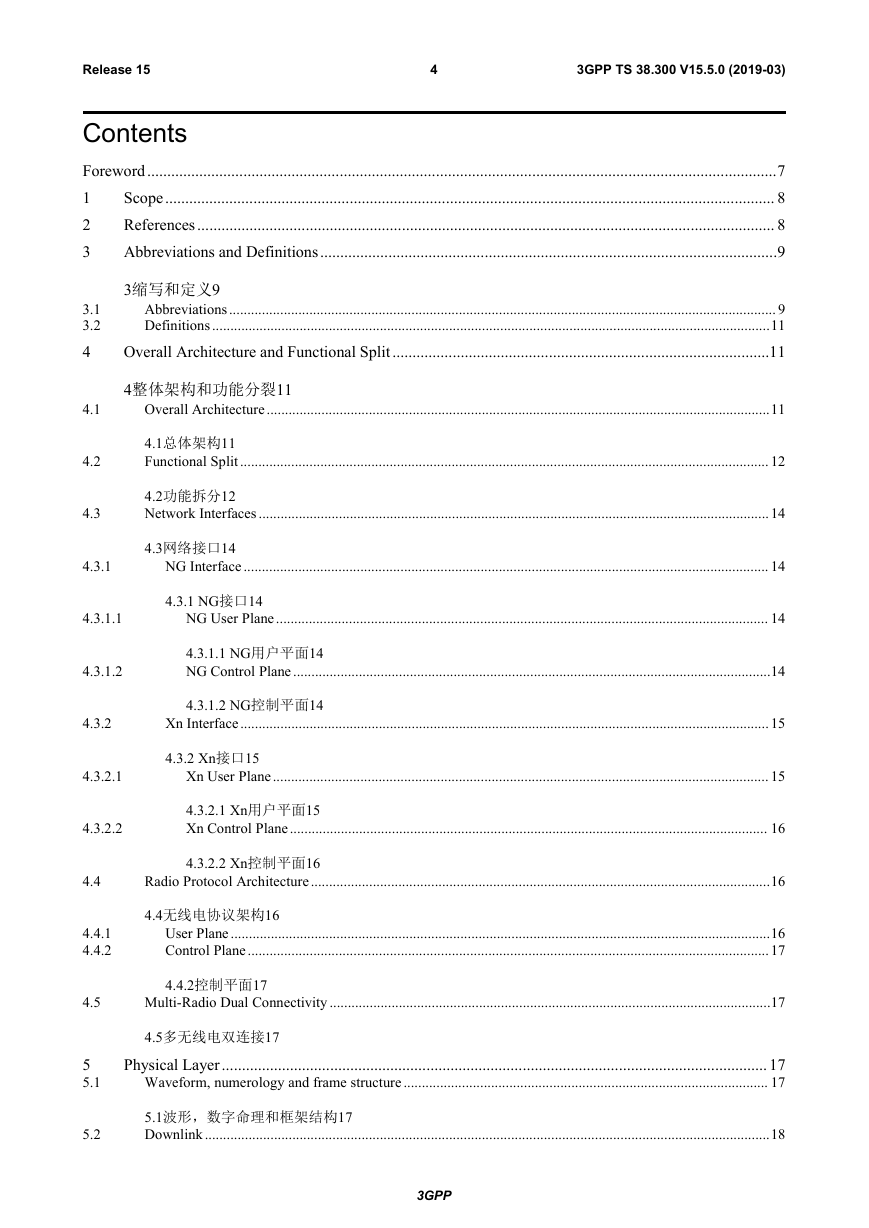
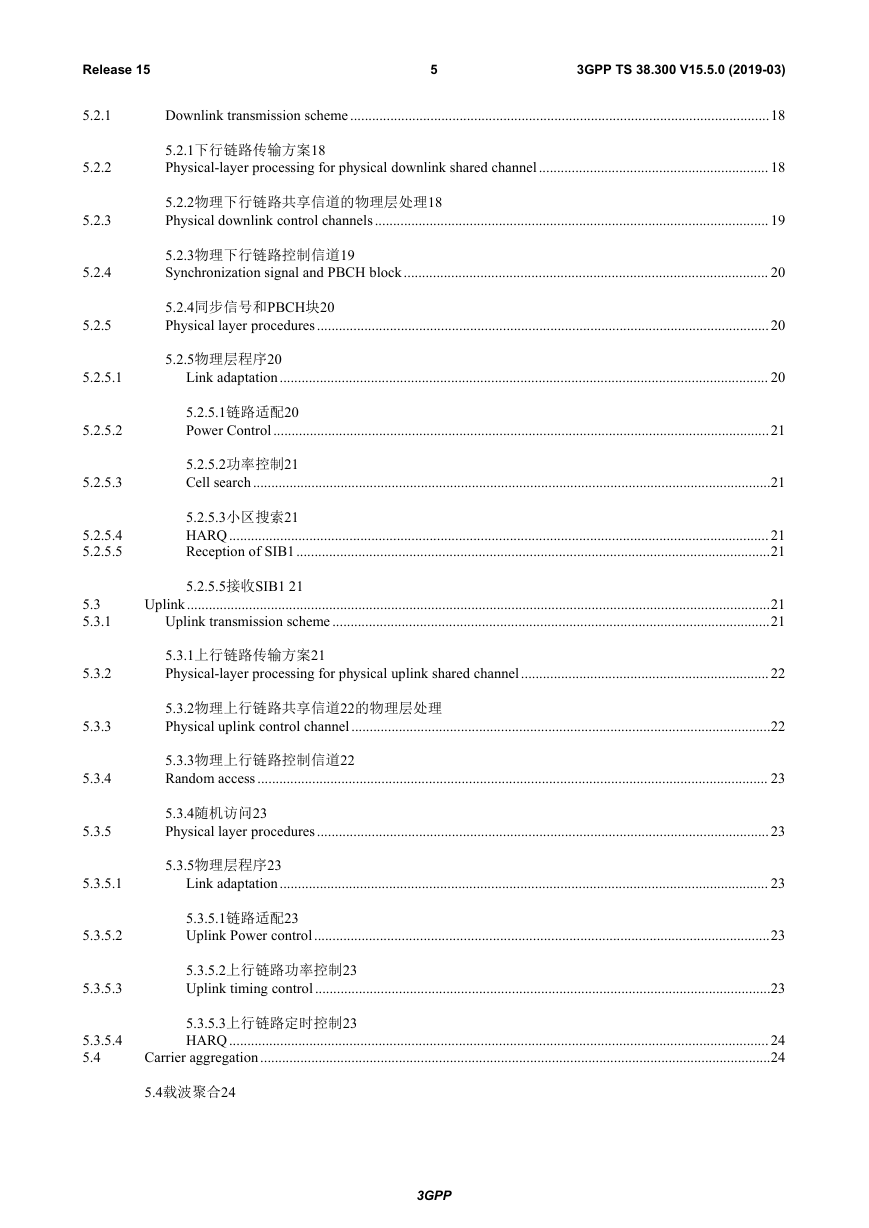
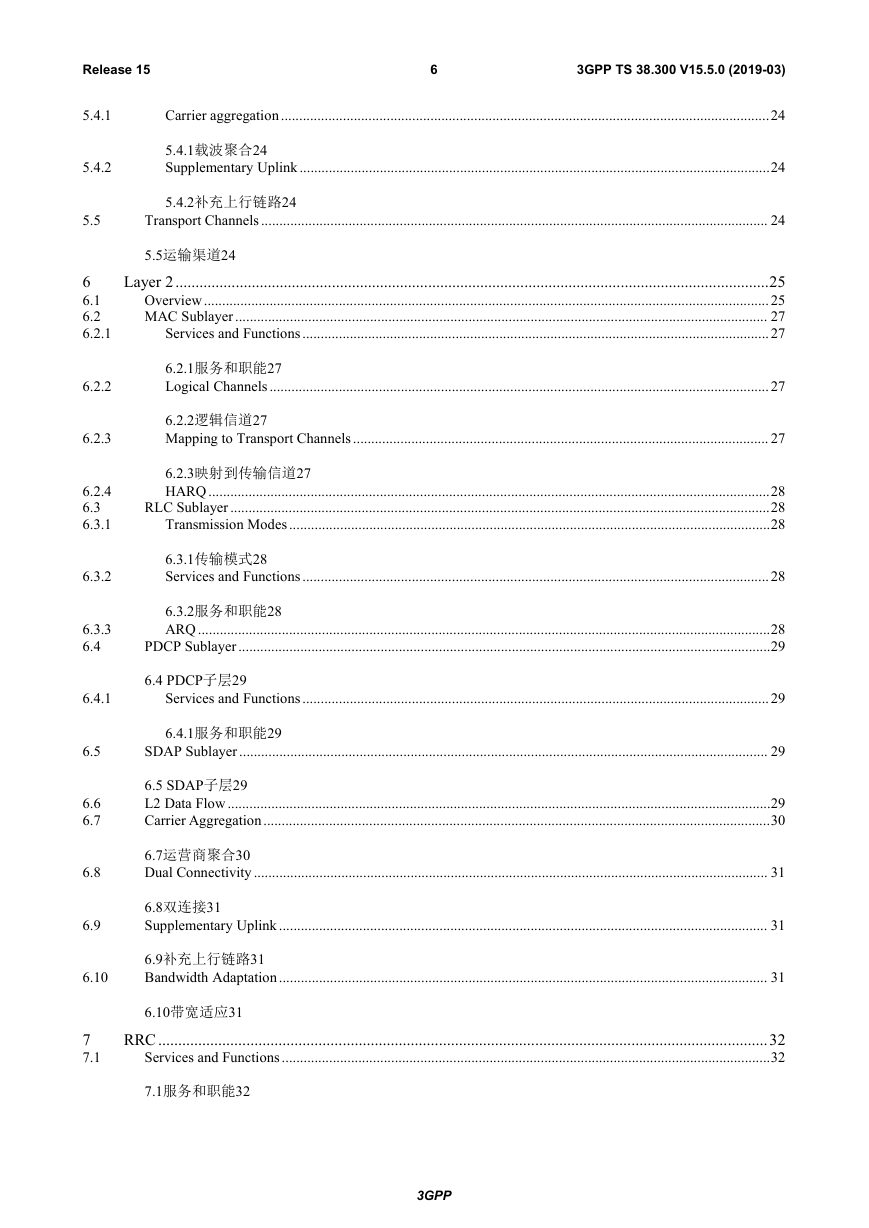
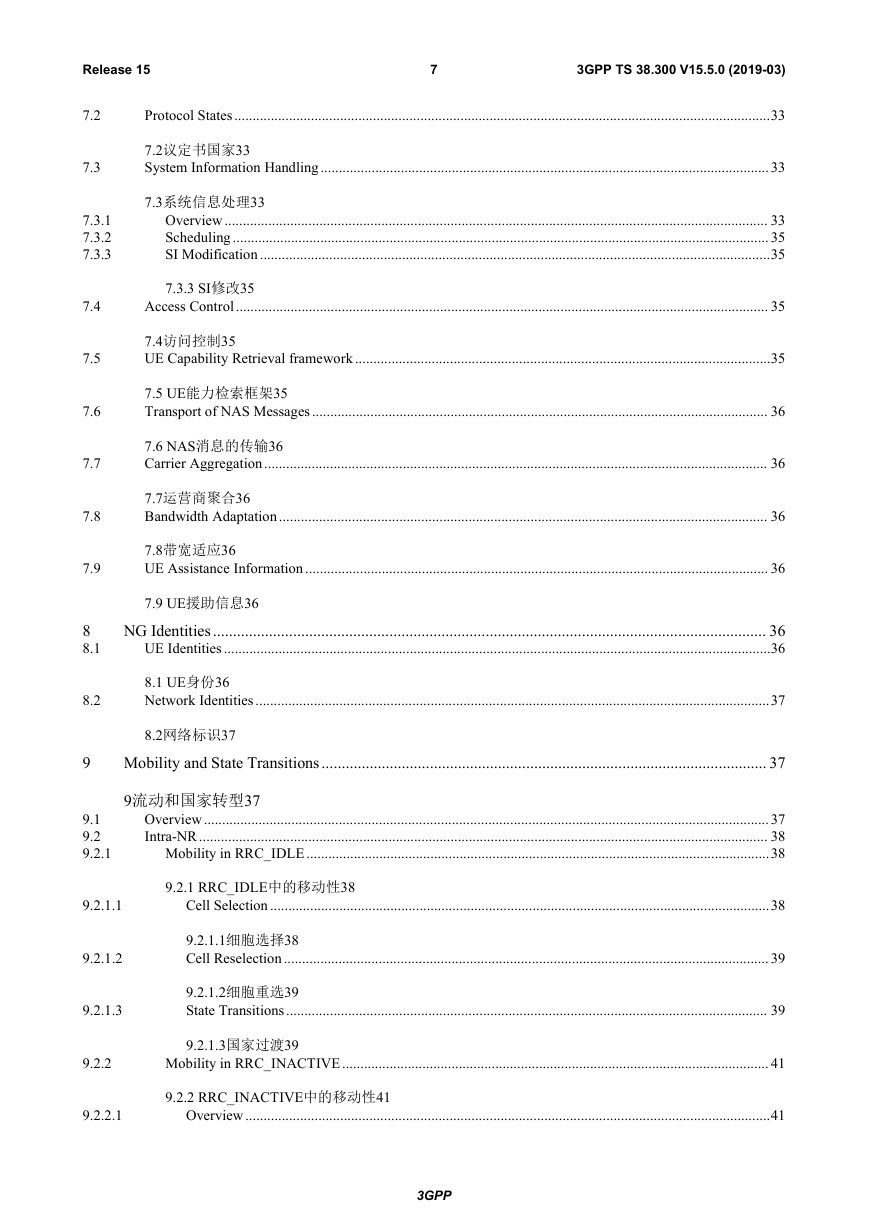
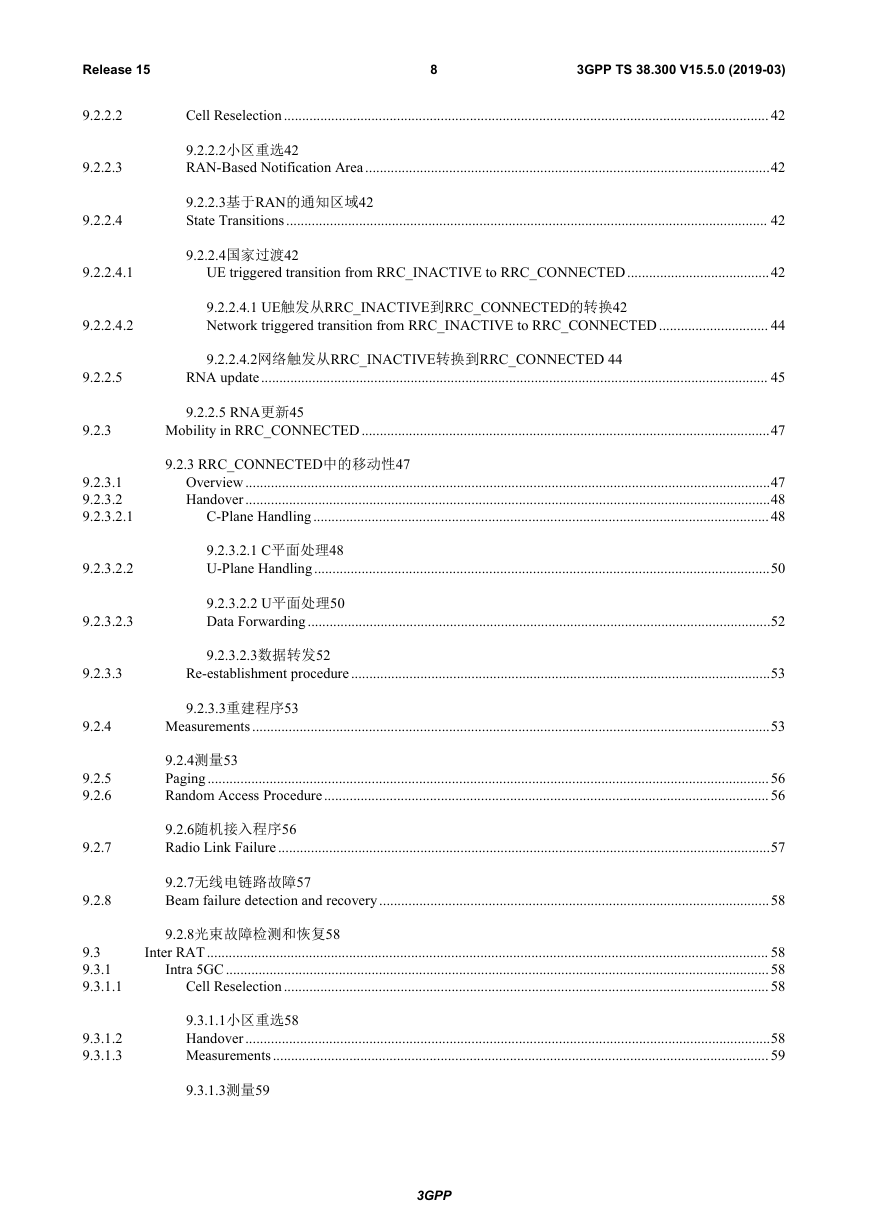








 2023年江西萍乡中考道德与法治真题及答案.doc
2023年江西萍乡中考道德与法治真题及答案.doc 2012年重庆南川中考生物真题及答案.doc
2012年重庆南川中考生物真题及答案.doc 2013年江西师范大学地理学综合及文艺理论基础考研真题.doc
2013年江西师范大学地理学综合及文艺理论基础考研真题.doc 2020年四川甘孜小升初语文真题及答案I卷.doc
2020年四川甘孜小升初语文真题及答案I卷.doc 2020年注册岩土工程师专业基础考试真题及答案.doc
2020年注册岩土工程师专业基础考试真题及答案.doc 2023-2024学年福建省厦门市九年级上学期数学月考试题及答案.doc
2023-2024学年福建省厦门市九年级上学期数学月考试题及答案.doc 2021-2022学年辽宁省沈阳市大东区九年级上学期语文期末试题及答案.doc
2021-2022学年辽宁省沈阳市大东区九年级上学期语文期末试题及答案.doc 2022-2023学年北京东城区初三第一学期物理期末试卷及答案.doc
2022-2023学年北京东城区初三第一学期物理期末试卷及答案.doc 2018上半年江西教师资格初中地理学科知识与教学能力真题及答案.doc
2018上半年江西教师资格初中地理学科知识与教学能力真题及答案.doc 2012年河北国家公务员申论考试真题及答案-省级.doc
2012年河北国家公务员申论考试真题及答案-省级.doc 2020-2021学年江苏省扬州市江都区邵樊片九年级上学期数学第一次质量检测试题及答案.doc
2020-2021学年江苏省扬州市江都区邵樊片九年级上学期数学第一次质量检测试题及答案.doc 2022下半年黑龙江教师资格证中学综合素质真题及答案.doc
2022下半年黑龙江教师资格证中学综合素质真题及答案.doc